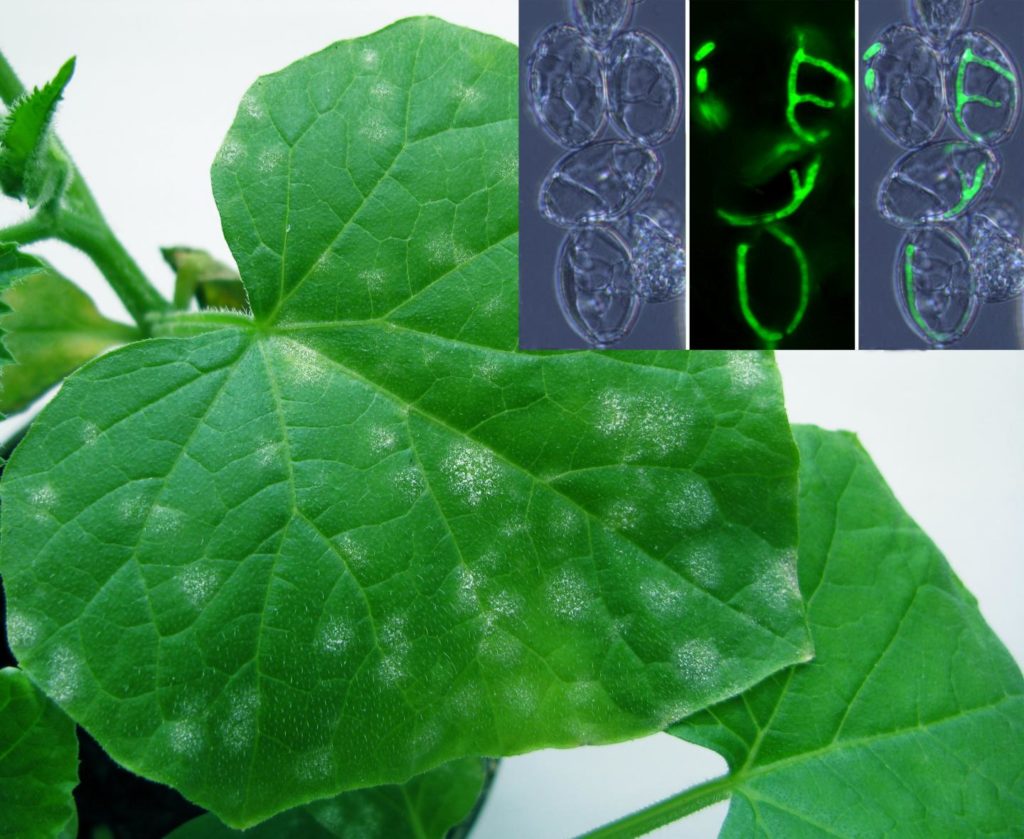St. Paul, MN (September 2019)–Powdery mildew is a common fungal disease that infects many plants around the world, absorbing their nutrients and weakening or even killing them. In turn, powdery mildews are often attacked in the field by even smaller mycoparasites (fungi that feed on other fungi).
These mycoparasites penetrate the powdery mildews on the host plant surface and live inside of them, reducing or even stopping the harmful effects of the powdery mildew. Because of this, some strains of these mycoparasites (which belong to the genus
Ampelomyces
) are used as commercialized biocontrol agents (BCAs) of powdery mildews. There have been concerns about the environmental impact of the usage of these BCAs as little is known about the interactions between mycoparasites and powdery mildews.
To address environmental concerns, and to better understand these interactions, a group of scientists working at the Hungarian Academy of Sciences, the Austrian Institute of Technology, and the University of Southern Queensland (Australia) genetically modified two strains of the mycoparasite to express Green Fluorescent Protein (GFP). As a result, the mycoparasites emit green light when examined with a fluorescence microscope, enabling researchers to better understand their structures and functions. This is the first study to explore these interactions with fluorescent protein biotechnology.
Their research revealed that these mycoparasites can live up to 21-days on mildew-free host plant surfaces, where they can attack powdery mildew structures as soon as they appear. Also of note, this research showed that these mycoparasites cannot spread in sterile soil or in decomposing leaves on the ground, showing that concerns about the potentially negative environmental impact of the BCAs are largely unsubstantiated.
These results, which can be found in ”
Green Fluorescent Protein Transformation Sheds More Light on a Widespread Mycoparasitic Interaction
” published in the August issue of
Phytopathology
, present the first successful genetic transformation of a group of common mycoparasites that have also been used as a BCA of an important group of crop pathogens. They are important for both biocontrol studies of crop pathogens and the ecology of natural interfungal parasitic relationships.
###
About
Phytopathology
For more than 100 years Phytopathology™ has been the premier international journal for publication of articles on fundamental research that advances understanding of the nature of plant diseases, the agents that cause them, their spread, the losses they cause, and measures used to control them. Articles are characterized by their novelty, innovativeness, and the hypothesis-driven nature of their research.
Follow us on Twitter @Phytopathologyj and visit
https:/
/
apsjournals.
apsnet.
org/
journal/
phyto
to learn more.
This part of information is sourced from https://www.eurekalert.org/pub_releases/2019-09/aps-sae090919.php
Ashley Bergman Carlin
651-994-3832
[email protected]
http://www.apsnet.org


